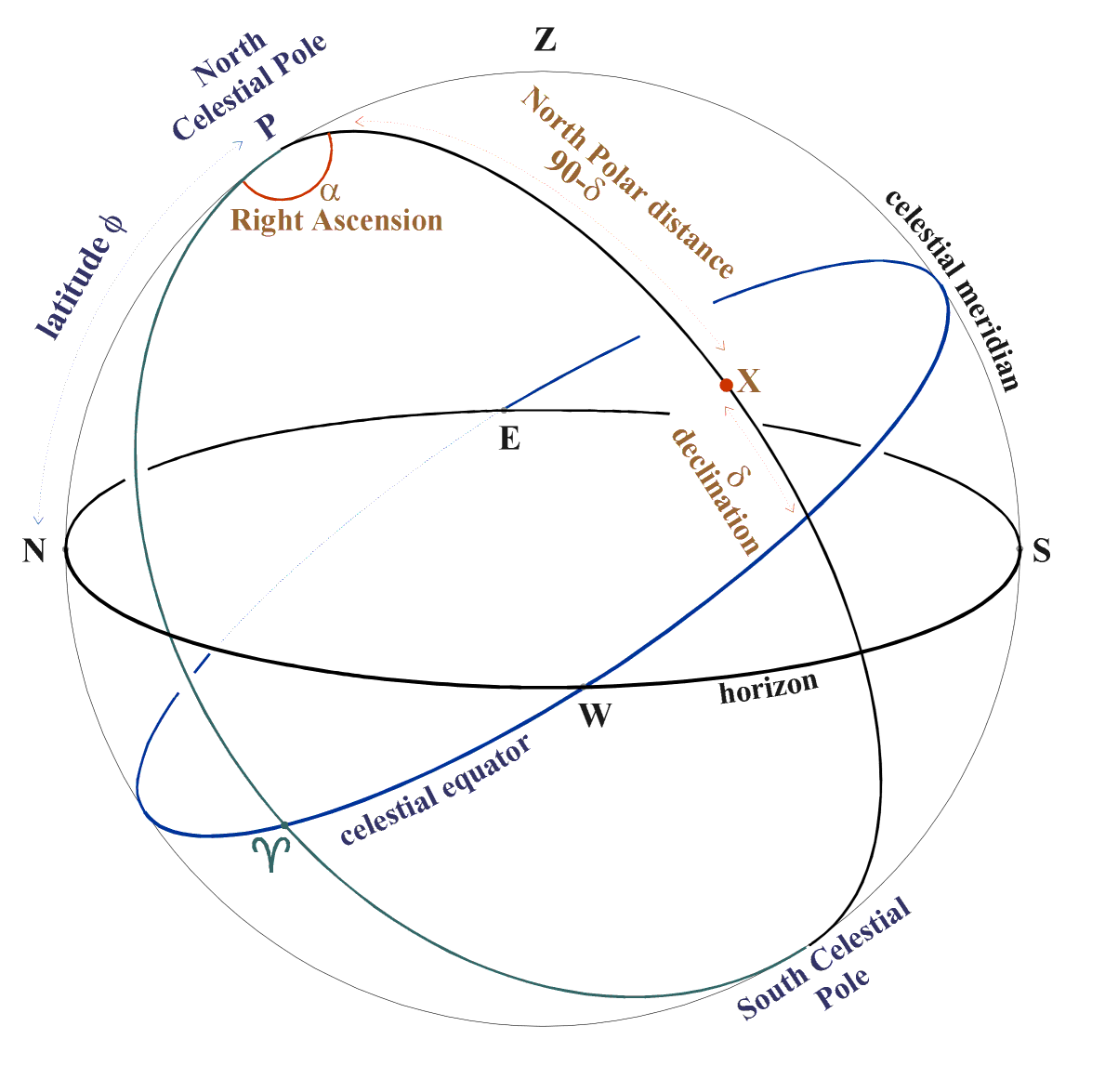Positional Astronomy:
Coordinate
systems: the second equatorial or "RA-dec." system
{Note: If your browser does not distinguish
between "a,b" and " α, β
" (the Greek letters "alpha, beta")
then I am afraid you will not be able to make much sense of the
equations on this page.}

Coordinates
in the first equatorial system (HA and declination)
still depend
on the time of observation.
Now we change the zero-point
for our coordinates.
We choose a fixed point on the celestial
equator,
called the vernal equinox, or the First Point
of Aries.
The symbol for this is the astrological symbol for
Aries:

(The
function of this point will become clearer later on.)
The declination
(δ) of object X is measured in the same way as before.
The
Right
Ascension or RA (α) of object X
is the angle along the celestial equator measured eastwards
from
the vernal equinox to the meridian of X.
Like HA, RA is measured
in hours 0-24h, but it goes in the opposite direction.
Comparison of these celestial coordinate systems with
the terrestrial system:
|
terrestrial
|
alt-az
|
HA-dec.
|
RA-dec.
|
|
equator
|
horizon
|
celestial equator
|
celestial equator
|
|
North Pole
|
zenith
|
North Celestial Pole
|
North Celestial Pole
|
|
South Pole
|
nadir
|
South Celestial Pole
|
South Celestial Pole
|
|
latitude
|
altitude
|
declination
|
declination
|
|
co-latitude
|
zenith distance
|
North Polar Distance
|
North Polar Distance
|
|
parallel of latitude
|
parallel of altitude
|
parallel of declination
|
parallel of declination
|
|
meridian of longitude
|
vertical circle
|
meridian
|
meridian
|
|
Greenwich Meridian
|
Principal Vertical
|
celestial meridian
|
vernal equinox
|
|
longitude
|
azimuth
|
Hour Angle
|
Right Ascension
|
Exercise:
The
four stars at the corners of the “Great Square of Pegasus”
are:
|
star
|
R.A.
|
declination
|
|
α
And
|
00h
08m
|
+29°05'
|
|
β
Peg
|
23h
04m
|
+28°
05'
|
|
α
Peg
|
23h
05m
|
+15°
12'
|
|
γ
Peg
|
00h
13m
|
+15°
11'
|
Calculate the lengths of the
two diagonals of the “Square”.
Click here
for the answer.
The Right Ascension and declination of a star
do
not normally change over short periods of time;
but the Hour
Angle changes constantly with time.
Consequently we have to find
a way of defining the time.
Previous section: Coordinate
systems: the first equatorial or "HA-dec" system
Next section: Sidereal time
Return
to index